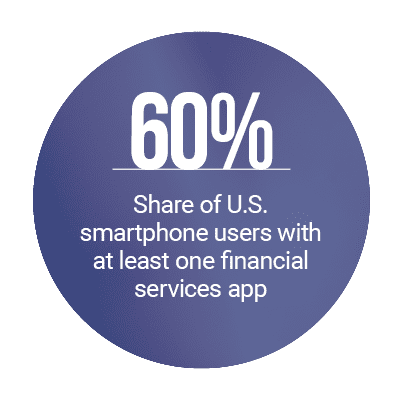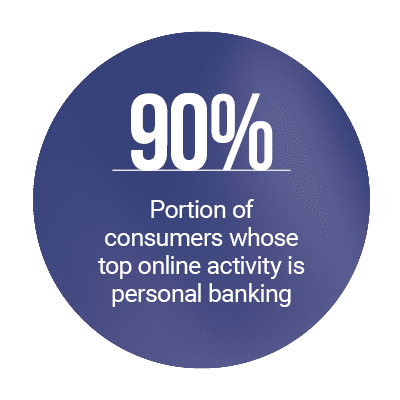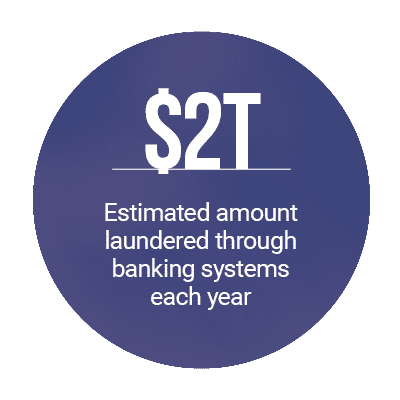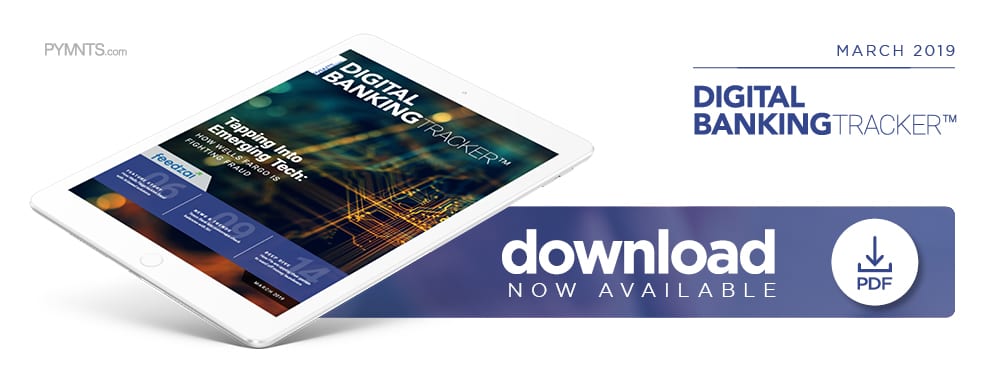How Wells Fargo Uses AI, Biometrics To Fight Money Laundering

Digital banking customers of today aren’t looking for the bank with the newest features — they’re looking for the bank that can keep their data safe. Any security mishap can send customers to one of the other digital banking apps that are ready and waiting for them.
In the new “Digital Banking Tracker™,” PYMNTS examines the ways digital banking is changing as security measures grow more stringent, and challenger banks look to amass more customers.
Around the Digital Banking World
One such brand looking to expand within the next year is German challenger bank N26, which is seeking to branch out of its native Europe and into the United States. Following a funding round of approximately $300 million, the fully digital bank is aiming to compete with both U.S. incumbents and challengers by the end of 2019. The challenger’s expansion comes as banks around the world are launching platforms of their own, including financial institutions (FIs) in Thailand and the Philippines.
Thailand’s United Overseas Bank, for one, is opening a fully digital brand this year called TMRW. The digital bank is designed to target millennial consumers who are more comfortable using digital services, and comes equipped with live chat features to support digitally native conversations.
Meanwhile, several global scandals have brought the importance of anti-money laundering (AML) protections to the forefront. The more than $220 billion money laundering scandal involving Estonia-based Danske Bank continues to affect the global banking world.  Several banks, including Germany’s Deutsche Bank, are caught in the crossfire, with their own AML protections coming under scrutiny from German regulators.
Several banks, including Germany’s Deutsche Bank, are caught in the crossfire, with their own AML protections coming under scrutiny from German regulators.
Tapping into Emerging Tech: How Wells Fargo is Fighting Fraud
To protect against the rise of money laundering and digital fraud hammering banks, many are turning to new technologies to stem the tide. Wells Fargo, for one, is using artificial intelligence (AI) and biometric authentication tools in combination to track patterns that human analysts overlook, according to Chuck Monroe, head of AI enterprise solutions for Wells Fargo.
“We’re using AI to go through and look across the internet, including the deep dark web, [for] signals that would apply to a particular AML situation,” Monroe said in a recent interview with PYMNTS. “There are lots of opportunities in the AML space to leverage AI to look much [deeper], because no human could do that level of investigation.”
To learn more about how Wells Fargo is using AI and biometrics for AML, take a look at the Tracker’s feature story.
Deep Dive: Digital Banking and Anti-Money Laundering
 As the banking world gets more digital and interconnected, many banks are starting to worry about money laundering. Take the banks that were engaging in routine business with Danske Bank, for example. Several of those banks are now being examined by regulators to ensure that they’re staying compliant with AML rules to keep launderers out.
As the banking world gets more digital and interconnected, many banks are starting to worry about money laundering. Take the banks that were engaging in routine business with Danske Bank, for example. Several of those banks are now being examined by regulators to ensure that they’re staying compliant with AML rules to keep launderers out.
That said, the digital banking world is expanding quickly, which means that banks across the globe need to keep a careful eye on the methods they’re using for AML and other fraud protections.
To find out how banks are upgrading their security, take a look at the Tracker’s Deep Dive.
About the Tracker
The “Digital Banking Tracker™,” in collaboration with Feedzai, brings the latest news, research and expert commentary from the FinTech and consumer banking space. It also includes a provider directory that features the rankings of more than 250 companies serving or powering the digital banking sector.
